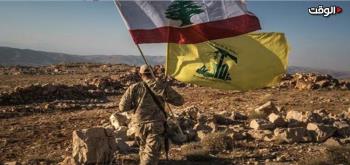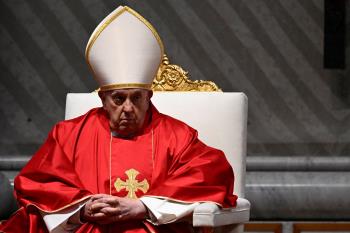Alwaght- The Arabaeen marching is one of the world’s greatest events that has all the elements of a news story like significance, wonder, freshness, and involvement. Such unique traits make the religious commemoration a considerable matter in news and media terms.
The Arbaeen has an important role in the duration of Ashura. If it was not for the narrative role of Hazrat Zaynab, the sister of Imam Hussein, played from Ashura, the day of Imam Hussein’s martyrdom, to Arbaeen, the fortieth day of his martyrdom, the message of the uprising of the grandson of Prophet Muhammad could hardly linger throughout history and the realities of Karbala could not stay alive to our day. The Arabaeen is a medium to report the Ashura message.
Arabaeen marching history
The marches of Arbaeen are a Shiite ceremony held every year as the fortieth of Ashura arrives. It takes place from various parts of Iraq to the holy city of Karbala. A majority of the pilgrims head to Karbala through Najaf, another holy city in Iraq. Along the road, there are service stations, dubbed “Mukeb” in Arabic, established to serve food and drinks and offer other services to the people.
Under Saddam Hussein, limitations were put on the commemoration. However, with the regime’s collapse in 2003, the event was revived, allowing millions of Shiites, not only from Iraq but also from Iran and elsewhere, to convene for the ceremony. Media reports say that in addition to Shiites, Sunnis, Christians, Yazidis, and people from other religions join the Arabaeen walking.
Over the past years, millions have joined in, making it the world’s largest gathering. Figures vary between 12 million and 20 million.
Sayyed Mohammed Ali Qazi Tabatabai, a late prominent Shiite cleric, in his investigative book on Arbaeen said commemoration of Imam Hussein has been a long-term Shiite tradition that was held even in defiance of the rule of Umayyad and Abbasid dynasties both of which were sworn enemies to the family of Prophet Muhammad, formally known Ahl Al-Bayat.
Historic documents suggest the tradition nearly disappeared after Sheikh Morteza Ansari, a prominent Shiite faqih, nearly three centuries ago. Allameh Mohaddes Nouri, another Shiite cleric, revived the ceremony.
Javad Shebr, the author of Adab Al Taf, a book on elegy for Imam Hussein, in a report on Arbaeen commemoration likens the convention of Arbaeen to Muslims’ gathering in Meccas for Hajj. He refers to the mourners who mourn in Arabic, Farsi, Turkish, and Urdu.
With the fall of Baathist rule, the Arabaeen marching was revived afresh in Iraq, with every year seeing a larger number of participants. Primarily only between two and three million pilgrims convened in Karbala for the event buut later saw a number of over 10 million, making it the largest religious gathering.
Religious Iraqi authorities in 2016 reported that thirteen days left to the Arabaeen, some 11.2 million marchers arrived in Karbala. In 2018, Imam Hussein shrine’s authorities said that 10 days before the Arbaeen nearly 12 million people from various nations arrived in the holy city. This figure did not include the large number of people who could not reach the shrine due to congestion.
Millions from around the world head to Karbala
There are various figures on the number of pilgrims arriving in Iraq for the ceremony. Some figures put the number at 15 million. Some others even go beyond and talk about 20 million.
Iraq’s interior ministry’s figures note that in 2013 at least 1.3 million foreign pilgrims visited Iraq to take part in the event. According to the Iraqi government’s reports, last year this figure went well beyond 1.8 million.
Why is Arbaeen marching important?
Walking for Arbaeen commemoration is one of the contemporary era’s crucial events as it stands out as the biggest human gathering. The Western media tried hard to boycott the Arabaeen but the event is so huge that they failed in their mission.
Last year, International Business Times, a US online magazine, reported on the Arbaeen saying that over 22 million pilgrims traveled to Karbala, setting a new record. 2017 Arabaeen ceremony brought 17 million to the city of Karbala, it went on. It described the Arabaeen as the largest ceremony in the globe, way bigger than Hajj that annually brings some two million Muslims to Mecca, Saudi Arabia.
The BBC also confirmed that a huge population arrived for the ceremony. Either as a religious belief or for sending a political message, the traveling in millions of mourners to Karbala has called global attention. The British broadcaster said that the message of “no to humiliation”, which was said by Imam Hussein, has considerably inspired the lives of Muslims.
Factor for unity
The Arabaeen marching strengthens a sense of unity among various ethno-sectarian groups participating in the commemoration. The change of the Arabaeen to a global event amid its spread across the region and also the participation of non-Muslims give it new aspects. Such a ceremony goes beyond the drawn lines of time and borders. It gives a sense of collective belonging among the participants as there is a distribution of duties when it comes to hosting and also during holding the rites.
Although the Shiites and the believers to the revolutionary Islam make the majority in this commemoration, the circle has now broadened enough to cover Sunni Muslims and even non-Muslims, building unity among the spirituality and freedom seekers. Such gathering, which undeniably has political aspects, is based on the uprising against oppression of Imam Hussein. Analysts suggest that it conveniently globalizes the message of Iran’s anti-oppression Islamic Revolution that was largely inspired by Ashura uprising.



























